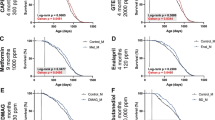Abstract
Purpose
To test the suitability of an Iterative Two-Stage Bayesian (ITSB) technique for population pharmacokinetic analysis of rich data sets, and to compare ITSB with Standard Two-Stage (STS) analysis and nonlinear Mixed Effect Modeling (MEM).
Materials and Methods
Data from a clinical study with rapacuronium and data generated by Monte Carlo simulation were analyzed by an ITSB technique described in literature, with some modifications, by STS, and by MEM (using NONMEM). The results were evaluated by comparing the mean error (accuracy) and root mean squared error (precision) of the estimated parameter values, their interindividual standard deviation, correlation coefficients, and residual standard deviation. In addition, the influence of initial estimates, number of subjects, number of measurements, and level of residual error on the performance of ITSB were investigated.
Results
ITSB yielded best results, and provided precise and virtually unbiased estimates of the population parameter means, interindividual variability, and residual standard deviation. The accuracy and precision of STS was poor, whereas ITSB performed better than MEM.
Conclusions
ITSB is a suitable technique for population pharmacokinetic analysis of rich data sets, and in the presented data set it is superior to STS and MEM.



Similar content being viewed by others
Abbreviations
- AIC:
-
Akaike information criterion
- ITSB:
-
iterative two-stage Bayesian
- ME:
-
mean error
- MEM:
-
(nonlinear) Mixed effect modeling
- RMSE:
-
root mean squared error
- STS:
-
standard two-stage
References
L. B. Sheiner and T. M. Ludden. Population pharmacokinetics/dynamics. Annu. Rev. Pharmacol. Toxicol. 32:185–209 (1992).
L. B. Sheiner, S. Beal, B. Rosenberg, and V. V. Marathe. Forecasting individual pharmacokinetics. Clin. Pharmacol. Ther. 26:294–305 (1979).
L. B. Sheiner and S. L. Beal. Bayesian individualization of pharmacokinetics: simple implementation and comparison with non-Bayesian methods. J. Pharm. Sci. 71:1344–1348 (1982).
R. W. Jelliffe, A. Schumitzky, D. Bayard, M. Milman, M. Van Guilder, X. Wang, F. Jiang, X. Barbaut, and P. Maire. Model-based, goal-oriented, individualized drug therapy. Clin. Pharmacokinet. 34:57–77 (1998).
A. Bustad, D. Terziivanov, R. Leary, R. Port, A. Schumitzky, and R. Jelliffe. Parametric and nonparametric population methods—their comparative performance in analysing a clinical dataset and two Monte Carlo simulation studies. Clin. Pharmacokinet. 45:365–383 (2006).
G. Suzy. Monte Carlo Parametric Expectation Maximization (MC-PEM) method for analyzing population pharmacokinetic/ pharmacodynamic (PK/PD) data. Abstracts of the Annual Meeting of the Population Approach Group in Europe. ISSN 1871–6032 (available from URL http://www.page-meeting.org/abstract=881) (2006).
J. L. Steimer, A. Mallet, J. L. Golmard, and J. F. Boisvieux. Alternative approaches to estimation of population pharmacokinetic parameters: comparison with the nonlinear mixed-effect model. Drug Metab. Rev. 15:265–292 (1984).
A. Racine-Poon and A. F. M. Smith. Population models. In D. A. Berry (ed.), Statistical Methodology in the Pharmaceutical Sciences, Marcel Dekker, New York, 1990, pp. 139–162 (Chapter 5).
F. Mentré, and R. Gomeni. A two-step iterative algorithm for estimation in nonlinear mixed-effect models with an evaluation in population pharmacokinetics. J. Biopharm. Stat. 5:141–158 (1995).
J. E. Bennett, and J. C. Wakefield. A comparison of a Bayesian population method with two methods as implemented in commercially available software. J. Pharmacokinet. Biopharm. 24:403–432 (1996).
D. J. Lunn, N. Best, A. Thomas, J. Wakefield, and D. Spiegelhalter. Bayesian analysis of population PK/PD model: general concepts and software. J. Pharmacokinet. Pharmacodyn. 29:271–307 (2002).
P. Girard and F. Mentré. A comparison of estimation methods in nonlinear mixed effects models using a blind analysis. Abstracts of the Annual Meeting of the Population Approach Group in Europe. ISSN 1871-6032 (available from URL http://www.page-meeting.org/?abstract=834) (2005).
S. Schiere, J. H. Proost, M. Schuringa, and J. M. K. H. Wierda. Pharmacokinetics and pharmacokinetic–dynamic relationship between rapacuronium (Org 9487) and its 3-desacetyl metabolite (Org 9488). Anesth. Analg. 88:640–647 (1999).
W. H. Press, B. P. Flannery, S. A. Teukolsky, and W. T. Vetterling. Numerical Recipes. Cambridge University Press, Cambridge, 1986.
L. B. Sheiner, and S. L. Beal. Some suggestions for measuring predictive performance. J. Pharmacokinet. Biopharm. 9:503–512 (1981).
J. H. Proost and D. K. F. Meijer. MW/Pharm, an integrated software package for drug dosage regimen calculation and therapeutic drug monitoring. Comput. Biol. Med. 22:155–163 (1992).
Author information
Authors and Affiliations
Corresponding author
Additional information
An erratum to this article can be found at http://dx.doi.org/10.1007/s11095-007-9261-0
Appendix
Appendix
The following control file was used in the NONMEM analysis. For practical reasons parameters were expressed in liters and liters per minute for volume and clearance parameters, respectively.
-
$PROBMCRA
-
$DATA mcra.dat
-
IGNORE = C
-
-
$INPUT ID TIME WGT AMT RATE DV
-
$SUBROUTINES ADVAN11 TRANS4
-
$PK
-
CALLFL = 1
-
V1=THETA(1)*EXP(ETA(1))
-
V2=THETA(2)*EXP(ETA(2))
-
V3=THETA(3)*EXP(ETA(3))
-
CL=THETA(4)*EXP(ETA(4))
-
Q3=THETA(6)*EXP(ETA(6))
-
Q2=(THETA(2)*(THETA(6)/THETA(3) + THETA(5)))*EXP(ETA(5))
-
S1=V1
-
-
$ERROR
-
CALLFL = 0
-
Y=LOG(F)+ERR(1)
-
-
; Starting at the exact values
-
$THETA (0, 3.64)(0, 3.01)(0, 6.44)(0, 0.51)(0, 0.048)(0, 0.051)
-
$OMEGA 0.0533 0.1217 0.1063 0.1245 0.2215 0.0650
-
$SIGMA 0.01
-
;Without POSTHOC only typical values are in the table
-
$ESTIMATION MAX = 9999 SIG = 6 METHOD = COND NOABORT POSTHOC
-
$TABLE TIME V1 V2 V3 CL Q2 Q3 DV
Rights and permissions
About this article
Cite this article
Proost, J.H., Eleveld, D.J. Performance of an Iterative Two-Stage Bayesian Technique for Population Pharmacokinetic Analysis of Rich Data Sets. Pharm Res 23, 2748–2759 (2006). https://doi.org/10.1007/s11095-006-9116-0
Received:
Accepted:
Published:
Issue Date:
DOI: https://doi.org/10.1007/s11095-006-9116-0




